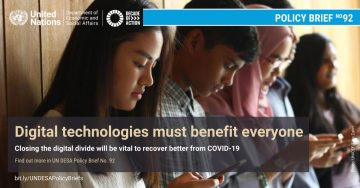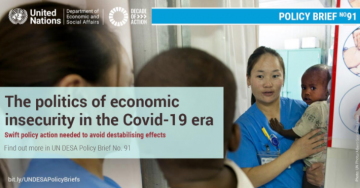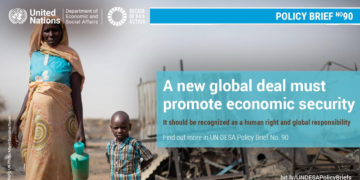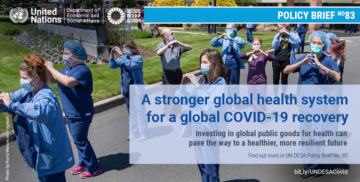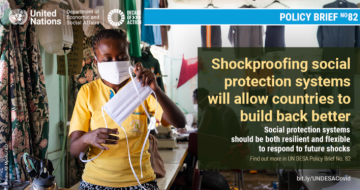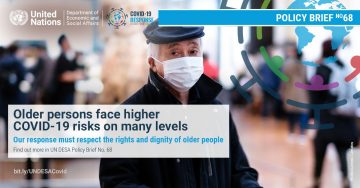Publications
Displaying 11 - 18 of 18
Policy Briefs |
COVID-19 is accelerating the pace of digital transformation: implications for social inclusion
Successive lockdowns and confinement measures put in place by governments to curb the spread of COVID-19 are accelerating the pace of digital transformation as information and communications technology (ICTs) are used to sustain daily lives and support business continuity. Recent forecasts expect the number of employees working remotely globally is set to double in 2021 (Chavez-Dreyfuss, 2020). Internet traffic has surged, as individuals are increasingly moving online to work, communicate, socialise, consume and seek entertainment (OECD, 2020). Companies and industries have also been adapting to…
Policy Briefs |
The COVID-19 crisis has served as a reminder of the extent of economic insecurity, even in countries and among groups that previously considered themselves secure. This is likely to have profound consequences, threatening countries’ ability to achieve the 2030 Agenda for Sustainable Development and its SDGs.
Policy Briefs |
Fears related to economic insecurity are on the rise. Changes in the world of work, together with globalization and technological breakthroughs, have benefited many people but are also putting many others at disadvantage or at risk. These long-standing trends, which have raised aspirations but also fears, are compounded by evolving threats, including those brought about by climate change and the COVID-19 pandemic.
Policy Briefs |
Amidst deliberations on priority areas for rebuilding, much attention has been paid to the need to strengthen domestic health care, and such proposals will certainly be high on the agenda for many Governments. The crisis, however, has also shone a spotlight on the shortcomings of the global health system.
Policy Briefs |
Risks of implementing more shock responsive social protection include overwhelming demand, lack of coordination, poor targeting and negative public perception. These can be partially offset by ensuring universal access to programmes. A country’s available fiscal space and level of debt distress are key contextual factors that determine the feasibility of more shock-responsive social protection.
Policy Briefs |
As the world grapples with an unparalleled health crisis, older persons have become one of its more visible victims. The pandemic spreads among persons of all ages and conditions, yet available evidence indicates that older persons and those with underlying medical conditions are at a higher risk of serious illness and death from the COVID-19 disease.
Often, chronic health conditions are more prevalent in old age; increasing risks for older adults. The World Health Organization has reported that over 95 per cent of fatalities due to COVID-19 in Europe have been persons aged 60 years or older. Several sources suggest that as data from fatalities in nursing homes become available, the death…
INTRODUCTION
Shocks and crises have become more frequent, intense and widespread in an interconnected world, affecting more people across the globe. Crises that might have previously remained relatively contained within a well-defined geographic region, are now propagated rapidly through globally interconnected systems and networks in areas such as economics, finance, the environment and health. The 2008 Global Financial Crisis is an example of how financial shocks spread through the interconnected balance sheets of financial institutions, causing havoc around the world. The COVID-19 pandemic also shows how national health systems were unable to absorb the effects of the virus, which…
INTRODUCTION
Shocks and crises have become more frequent, intense and widespread in an interconnected world, affecting more people across the globe. Crises that might have previously remained relatively contained within a well-defined geographic region, are now propagated rapidly through globally interconnected systems and networks in areas such as economics, finance, the environment and health. The 2008 Global Financial Crisis is an example of how financial shocks spread through the interconnected balance sheets of financial institutions, causing havoc around the world. The COVID-19 pandemic also shows how national health systems were unable to absorb the effects of the virus, which…
 Welcome to the United Nations
Welcome to the United Nations
